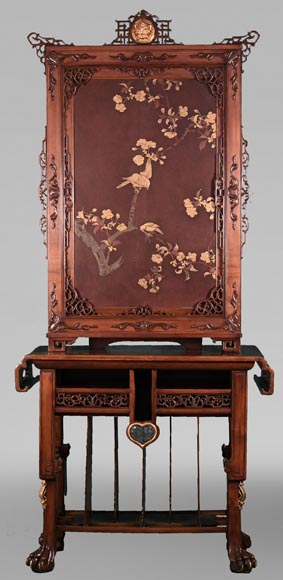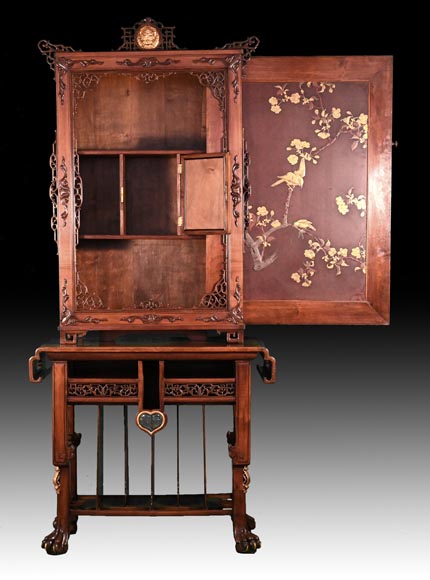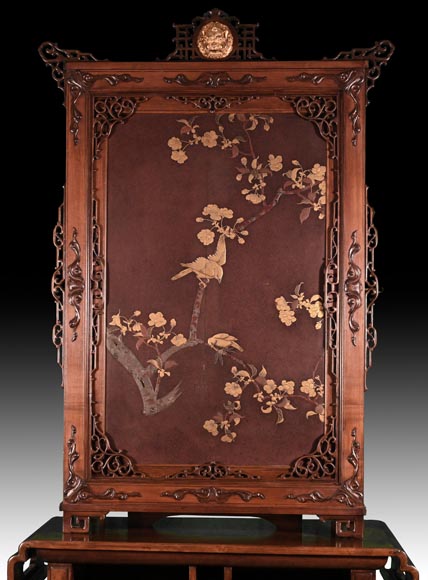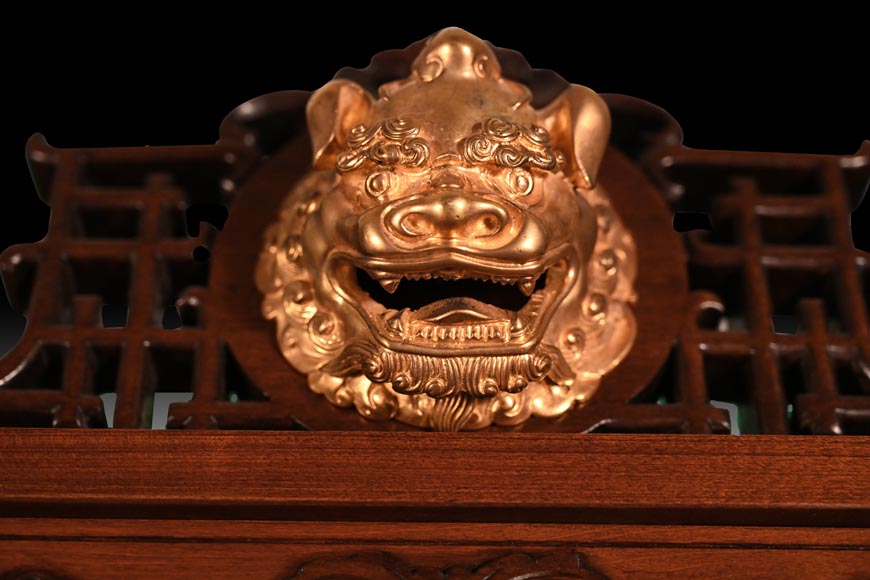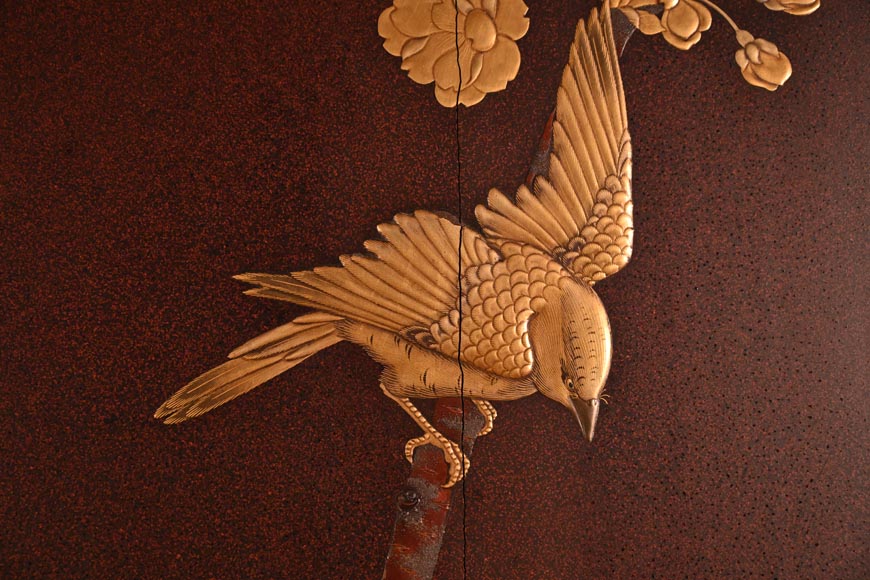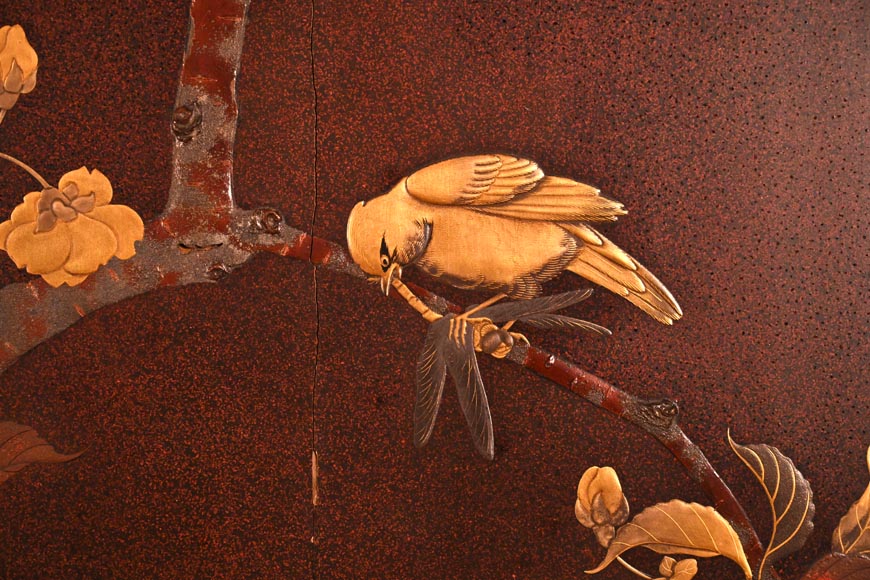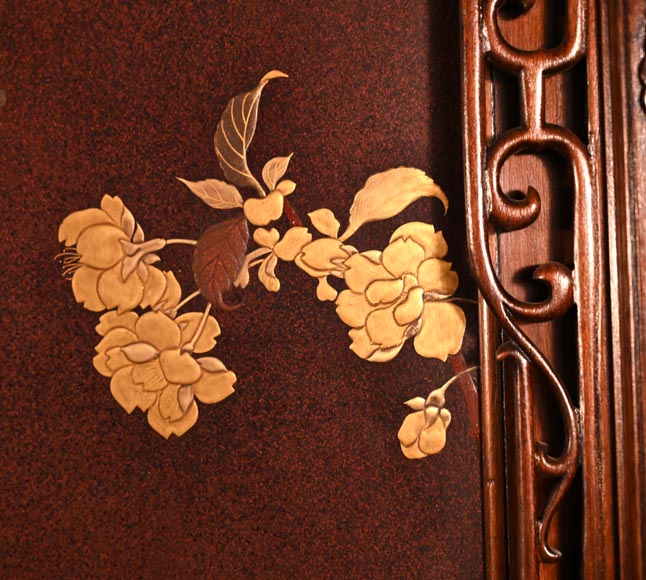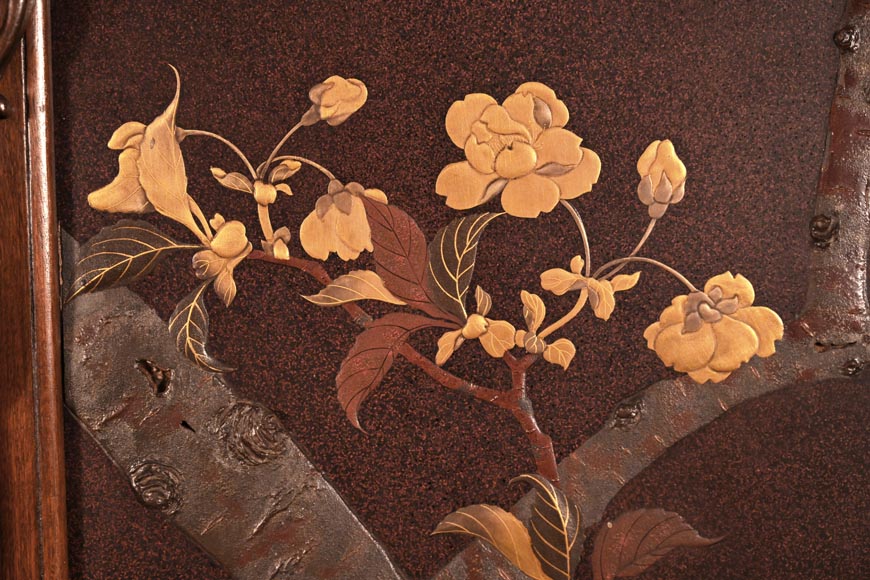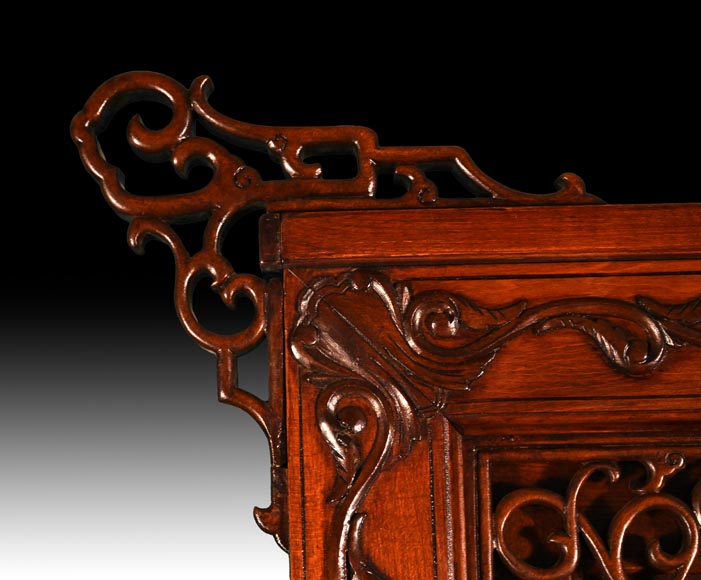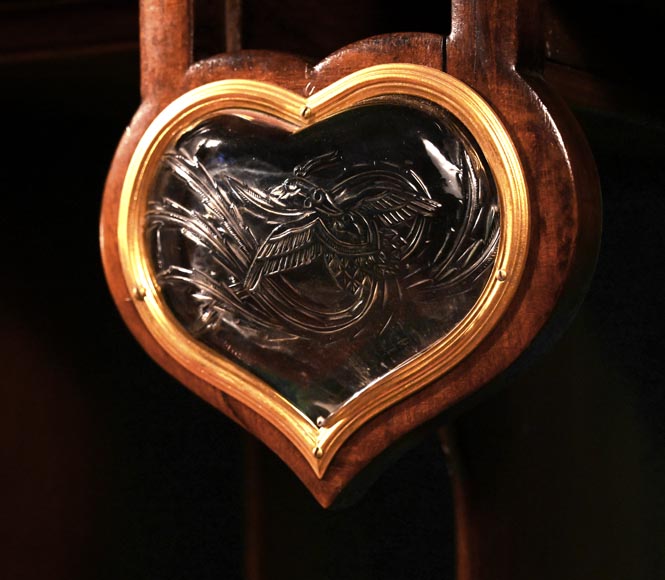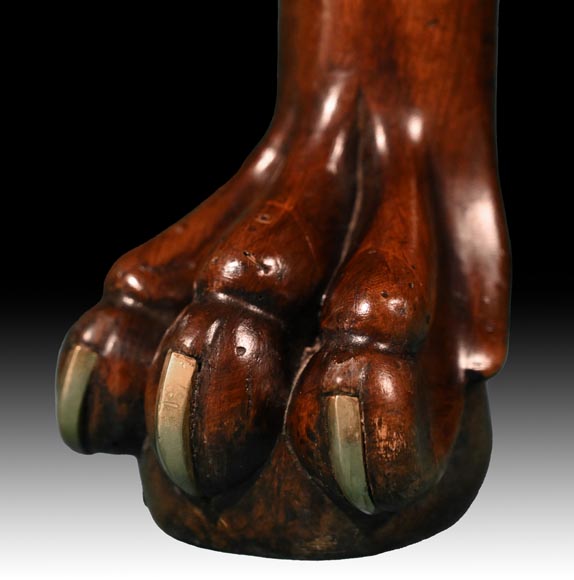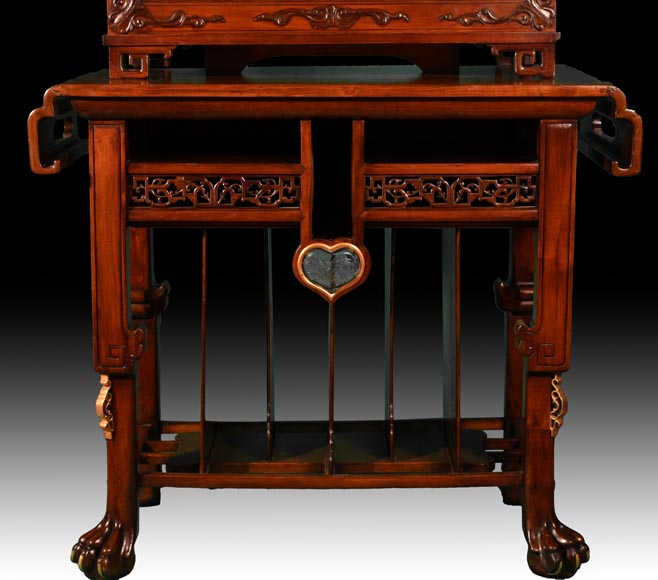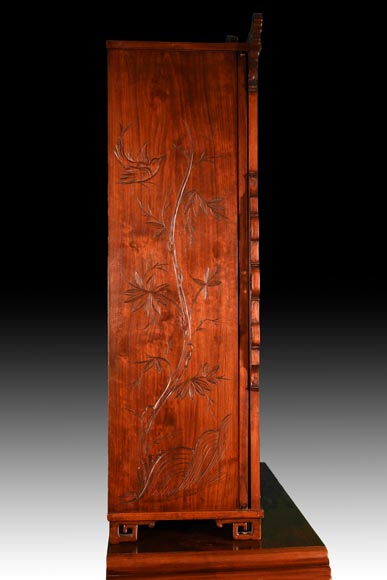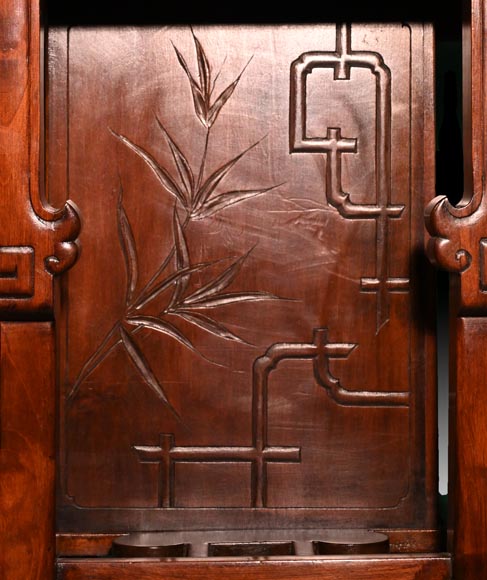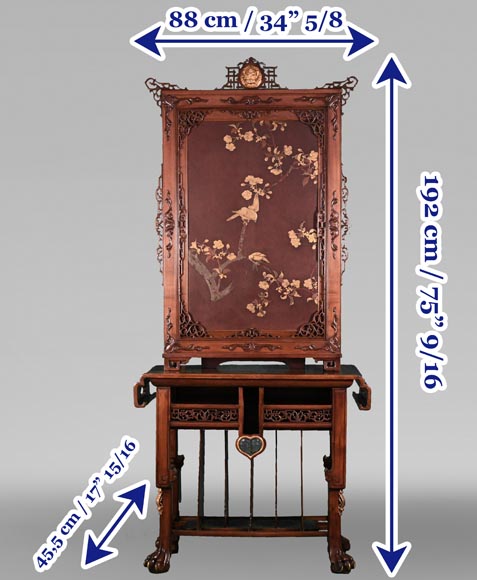Style Japonism, Chinoiserie / Ref.12432
CHARBONNIER (cabinetmaker) for L’ESCALIER DE CRISTAL, Japonist Cabinet with Sliding Lacquer Panel, circa 1890
Dimensions
Width 34'' ⅝ 88cm
Height 75'' ⅝ 192cm
Depth: 18'' ⅛ 46cm
Origin:
France, 19th century
This significant cabinet in rosewood veneer was created for L’Escalier de Cristal after 1885.
Founded around 1808 by the widow Désarnaud, the Escalier de Cristal was taken over by the brothers Georges and Henri Pannier at the end of the 19th century. They adapted to the vogue of Japonism while maintaining the high quality that made the store’s reputation. This cabinet is to be found in Henry Pannier’s notebooks, where it is recorded as having been made by the cabinetmaker Charbonnier; as such, it can be dated to around 1890, shortly after the Pannier took over the store.
The design of this cabinet draws inspiration from Japanese architecture and furniture. It features a cabinet with a large Japanese lacquer panel adorned with gold floral and bird motifs. True to its primary inspiration, it does not open in the European manner but slides, referencing the interior walls of traditional Japanese houses. The frame is decorated with intricate woodwork, echoing East Asian ornamental vocabulary. It rests on a base with extending sides, featuring a heart-shaped crystal center encased in gilded bronze, which can be attributed to the work of Édouard Enot. Gilded bronze ornaments can also be found above the clawed feet and on the pediment.
The use of lacquer to decorate furniture became popular in Europe as early as the late 16th century, following the first Jesuit missions to Asia and the creation of the East India Company. In the 18th century, the invention of Martin varnish allowed Europeans to imitate it effectively, particularly in furniture and interior decoration. However, the opening of Japan and the intensification of trade with the Far East in the latter half of the 19th century led to an influx of raw materials, enabling French cabinetmakers to incorporate more lacquer panels into their creations.
Informations
Price: on request
Recommended for you :
Dimensions:
Width: 71
Height: 167
Depth: 37
Dimensions:
Width: 83
Height: 179
Depth: 45
Dimensions:
Width: 75
Height: 158
Depth: 47
Dimensions:
Width: 103
Height: 88
Depth: 51
Dimensions:
Width: 281
Height: 82
Depth: 156
Dimensions:
Width: 67
Height: 203
Depth: 32
Dimensions:
Width: 53
Height: 138
Depth: 34
Dimensions:
Width: 32
Height: 59
Depth: 22
Dimensions:
Width: 98
Height: 204
Depth: 43
Dimensions:
Width: 275
Height: 84
Depth: 151
Dimensions:
Width: 132
Height: 74
Depth: 77



